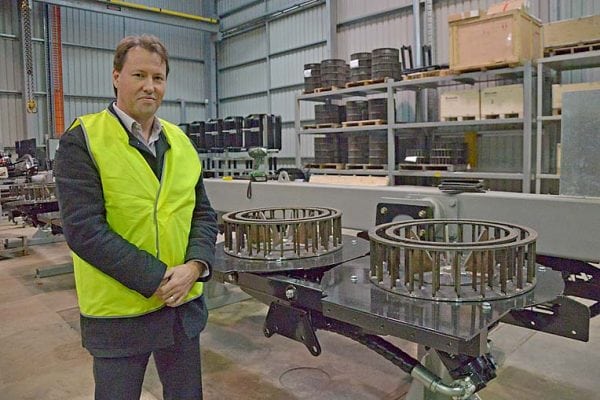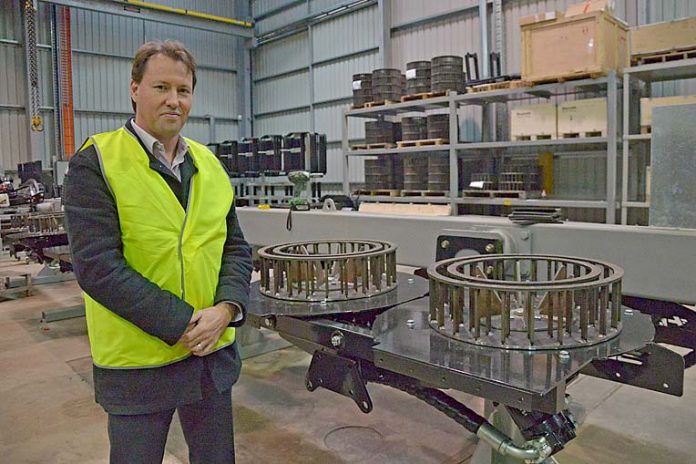
COMBATING the growing issue of herbicide resistance, the Integrated Harrington Seed Destructor (iHSD) is the solution for many farmers across the region and the future for De Bruin Engineering.
The machine, first released onto the market last year, has already impressed farmers throughout Western Australia, South Australia and Victoria and is expected over time to lead to an increase in the effectiveness of herbicides.
Currently manufactured at Mount Gambier-based business De Bruin Engineering, the iHSD will in the next few years become available to an international market.
“We are now focused entirely 100pc on the manufacturing of the iHSD,” managing director Judson Wheatley said.
“It’s a massive change, but things are going well and we have plans to start exporting the product overseas in three or four years.
“We have an exclusive license to manufacture and sell HSD technology worldwide, including North America, Canada, Europe and the UK, and we have an Australian distribution network with 28 dealers nationally and plans to recruit and train more next year.
“Our aim will manufacture iHSD units here, in Australia, and export to the rest of the world.”
Conceived by Western Australian farmer Ray Harrington over 20 years ago, the latest generation of HSD technology was designed by University of South Australia’s Agricultural Machinery Research and Development Centre and funded from the Australian Grains Research and Development Corporation.
HSD technology has been developed and thoroughly tested for over a decade and the iHSD was created to help with emerging issues of herbicide resistance across Australia and the world.
“Farmers have to deal with constant change – annual rye grass previously used as pasture for grazing was controlled primarily with herbicides when millions of acres were converted to cropping,” Mr Wheatley said.
“However, over time many rye grass populations evolved that were resistant to a common herbicides and now many different weed species have followed suit and some species have evolved resistance to multiple herbicide groups.
“There are only a handful of chemical groups you can use, so alternate methods of weed control are required to stay on top of weeds.
“The iHSD is an important tool for sustainable farming operations.”
Last year, 11 of the machines were used across Australia with a further 60 manufactured in Mount Gambier throughout 2017.
“We are quite seasonal obviously so we expect to hold production but continue our research and development and support programs until around February next year and then we will start production again,” Mr Wheatley said.
“Eventually we will manufacture all year round, but we’re still in early stages commercialisation so we expect to make changes as we go along – it is a continual process of R&D to improve the iHSD.
“It’s about taking all the lessons we have learnt and building on that to develop a world-class machine ready for export.
“This is a really exciting time for us.”








